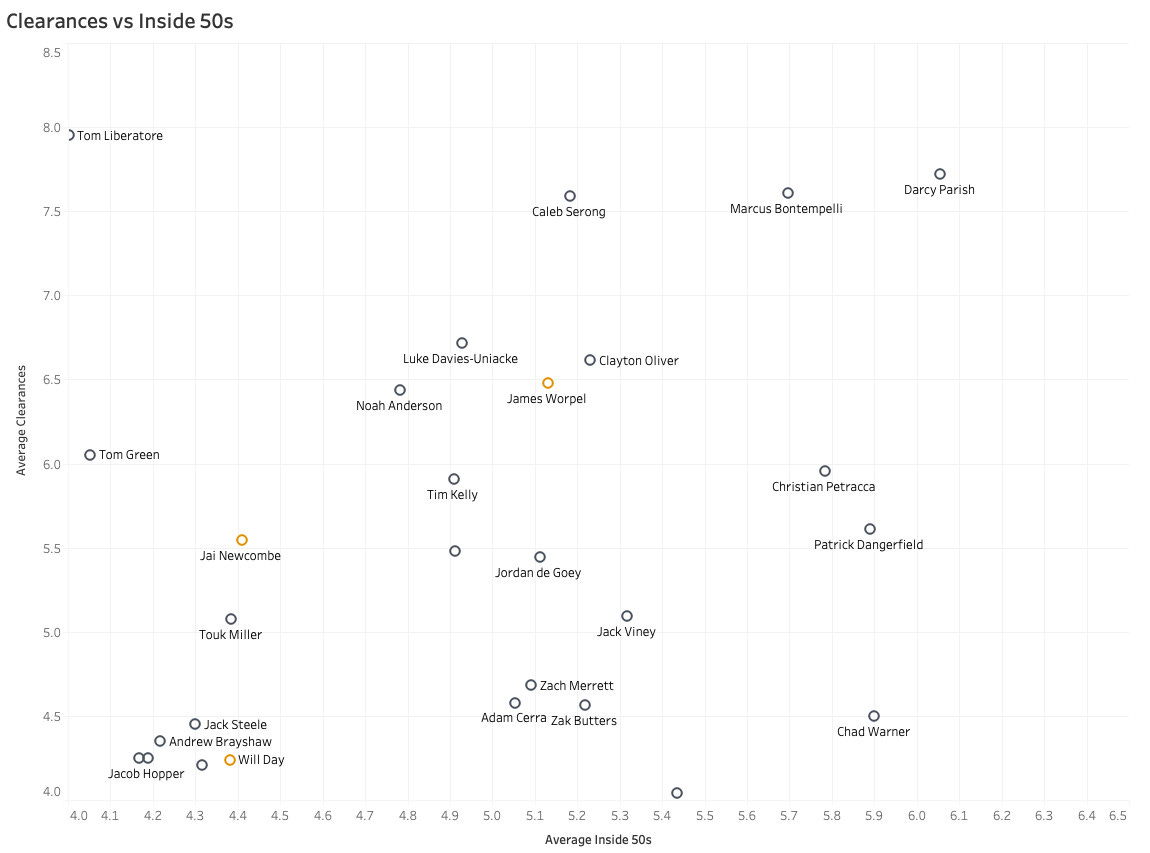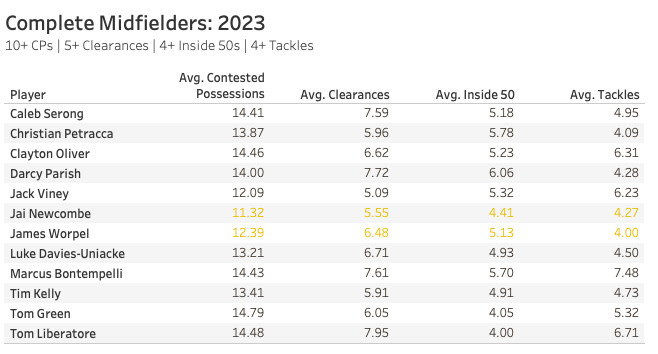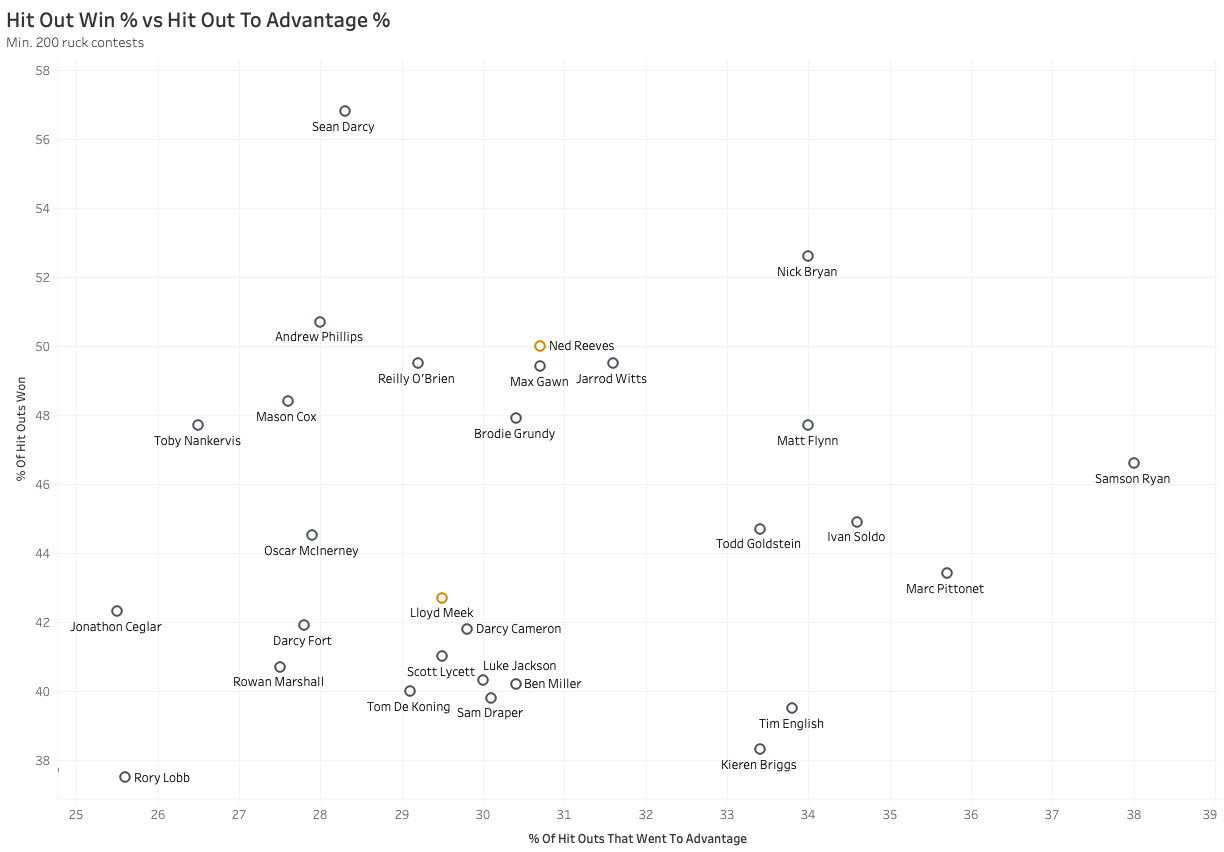Forget opinions - what does the data say?
Our data guru Simon Morawetz takes a deep dive to look through and analyse some key numbers from 2023
Subscribe to Hawks Insiders for all the news through Hawthorn-tinted glasses and more exclusive content.
So, season 2023 is done and dusted (as far as we’re concerned, anyway). Now it can be reviewed from all angles as we begin the all-too-long wait for next footy season.
To that end, I’ve crunched the numbers and tried to find some insights as to what underpins our best footy.
Kick the ball
One thing that stands out is our kick-to-handball ratio during our best stretch of the season. From Rounds 10-22 (shaded brown) we won six and lost six. If only we’d held on for another minute against Richmond, we’d have come out ahead over that run.
It was conspicuous that we handballed a lot more in that time. We even handballed more than kicked a few times: most notably the Round 18 win over North, where the likes of Josh Weddle led us to victory with a fast-paced, almost haphazard running game.
What’s also obvious is that we were kicking a lot more in the first four rounds – games that resulted in three massive losses and a win over North. The ratio of kicking drops dramatically in Rounds 5 and 6, and not coincidentally we nearly pinched those games against GWS and Adelaide.
There are exceptions: our kicking rate shoots back up in Rounds 21 and 22, the wins against Collingwood and the Bulldogs. But it makes sense to play this way against the Pies – a kick-heavy strategy is how you counter a pressure game. For the most part, it seems we play a lot better when we’re moving the ball freely.
Uncontested footy for the win
Another stand-out statistic is how our best results followed high levels of uncontested ball.
The chart below shows our uncontested possession (UP) differentials, with the brown columns being our wins. We had seven games with an UP differential of +40 or better – they were our seven wins.
This is related to the previous point: handballs and handball receives are generally uncontested, so handballing more will often correlate to UP differential. It also makes sense that we would perform better when we are applying pressure ourselves, and thus the opposition has less uncontested ball.
Attacking (non) efficiency
One of my more unsurprising findings is that our attacking efficiency is poor. We don’t score as frequently going inside 50 as our opposition does. In fact, we had a better conversion rate (scores per inside 50) on just seven occasions, the best three of which were against North and the Eagles.
As I said, this isn’t meant to be a shocking revelation. Sometimes the data just confirms what we already know: we need a better forward line.
Midfield maestros
On an individual level, we had some of the statistically better performed midfielders in the league this year in James Worpel and Jai Newcombe. It’s been widely documented that they benefitted from increased responsibility in the engine room and that is reflected in the data.
The following chart shows all the players with an average of 4+ clearances and 4+ inside 50s this year (and who played at least ten games). Worpel is keeping pace with some pretty impressive names, while Newcombe is in the upper echelon for clearances.
It is also interesting to spot one Will Day in the southwest corner of the chart, sitting alongside the likes of Andrew Brayshaw and Josh Kelly. He’s improved out of sight this season, and while there’s been a lot of focus on his class and skill level, his clearance work is an underrated element of his game.
Adding some other key midfield stats to the mix – namely tackles and contested possessions – has Newcombe and Worpel keeping some pretty tidy company:
Of course, numbers are just that. Some of the most dynamic and impactful midfielders don’t feature on this table, yet you wouldn’t say that Worp and Duke are better than, say, Butters and Rozee. Getting lots of the ball is one thing, doing something with it is another.
Another response to the table above would be that you’d rather have a deeper mix of contributors than a few stand-outs. For instance, five of the top six teams don’t have any players in that table, because they bat deep. And perhaps it’s not sustainable in the long term to overwork two young midfield bulls too early.
But the fact remains we have two contested beasts and a gun rover to build our premiership midfield around, and that is cause for excitement. Worpel (24yo), Newcombe (22), and Day (22) should be our preferred centre square combination for some time yet, and there’s plenty of support growing around them. When those players rise to match the Newcombes and Days… look out.
Get Rucked
Finally, I want to touch on the ruck situation. At the start of the year I wrote that Reeves’ height means the first part of the hitout-to-advantage (HTA) is easy. The second part is the tricky part, and his percentage wasn’t too flash coming into the season (he’d only played 17 games to that point).
It seems he is growing into the role. His synergy with the midfield is building. Particularly in the back half of the year, he emerged as the clear number one.
As expected, Reeves’ hit-out win rate is exceptional – fifth in the league, in fact (of players who attended 200+ ruck contests). He increased his HTA percentage above 30%, level with Max Gawn, as his experience and connection with the mids grew. By contrast, Lloyd Meek – working with a new midfield group – saw his HTA% fall.
Reeves also started to get a bit more involved outside of the ruck contest later in the year. He had multiple clearances in every game after the bye. 10 of his 31 marks (and one of his two goals) came from Rounds 21 to 23.
Reeves is set to cross 50 games in 2024, and will still be just 25 years old. He may not win a Brownlow, but on current progression, a massive breakout season in the next 24 months is not as unlikely a prospect as it once might have been.
As an aside, it is worth noting that Reeves was suspended for Round 20, and Meek put in a great shift that day. It’s possible that that was the catalyst for Reeves’ bump in form in the following three weeks: Reeves knows he has genuine competition for the spot. It would be magnificent if having two options does what it should do, and drives both of them to greater performance.
Whoever’s contesting the tap, one thing is for sure: the players at their feet are high-quality and handball-happy. Expect us to keep trying to get the ball to the outside and moving it quickly. Once we start converting inside 50s into scores a bit more consistently, the wins will quickly pile up.










